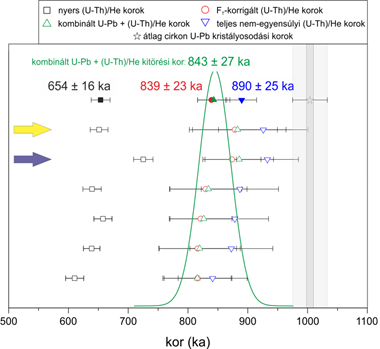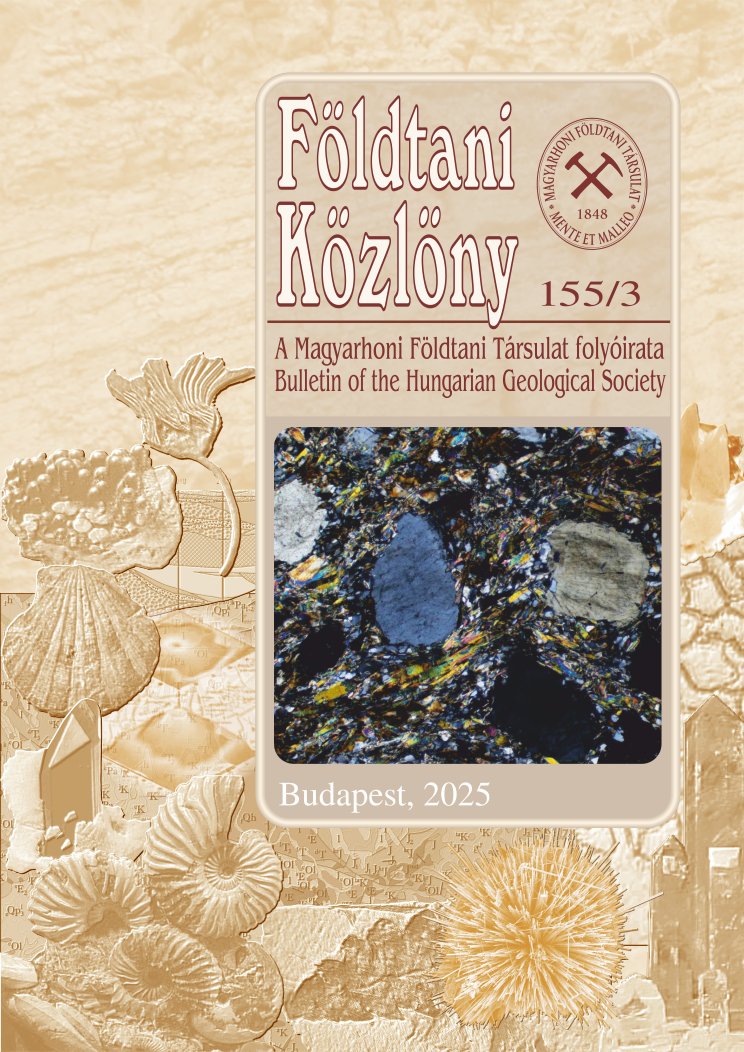Methodology and application of zircon (U-Th)/He geochronology in case of dating young (<1 Ma) eruptions
Abstract
Dating of young volcanics is often difficult in the time range between the sensitivities of radiocarbon and the routine K-Ar methods (ca. 50 ka and 1 Ma, respectively) or in case of absence of suitable K-bearing minerals (e.g. leucite, sanidine) of charcoal fragments. The combined zircon U-Th and (U-Th)/He dating cover this critical time-window. Because of the low closure temperature of the zircon (U-Th)/He system (~150-180 °C), and the fact that zircon is a widespread accessory mineral in most of the volcanic eruption products make the method suitable to date the age of eruptions directly. These advantages supported the expansion and the application of the method by the international researchers for dating young (< 1 Ma) eruption events during the last decade. In this Hungarian review paper we summarize the theoretical principles, basic methodology and past developments of the (U-Th)/He geochronology and also show the applicability of the method for dating young (<1 Ma) volcanic eruptions.
We have selected eruption products from the Carpathian-Pannonian Region which are related to the youngest volcanic activity (Ciomadul, South-Harghita) of the area. These are the andesitic dome of Dealul Mare and the pyroclastic deposit close to the village Bixad with eruption ages of 843 ± 27 kyrs and 32.6 ± 1.0 kyrs, respectively. The selected samples are good examples to demonstrate each steps of the method from the measured raw data to the corrected age and to illustrate the adequacy of the method to derive reliable eruption ages for young volcanic products.
















